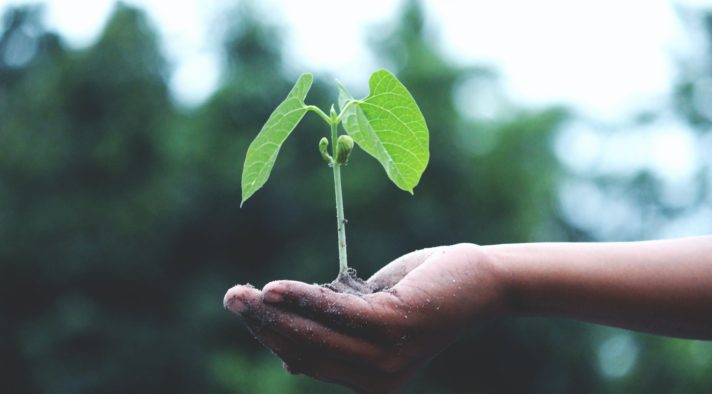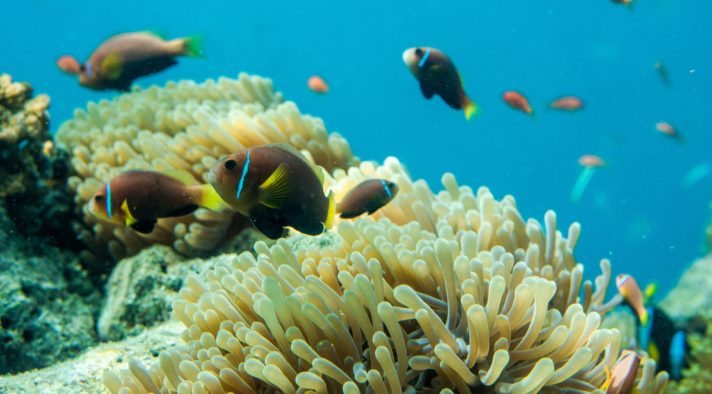The Government of Jalisco, together with the Ministry of the Environment and Territorial Development, has become a role model in recent years thanks to the transversal integration of sustainability in its public policies. In addition to working for the conservation of biodiversity through initiatives such as “Tequila free from deforestation”, Jalisco has promoted subnational leadership for adaptation to climate change with the creation of the “Alliance of Mexican Governors for Climate” to achieve the goals of the Paris Agreement. We spoke with Sergio Graf Montero, Secretary of the Environment and Territorial Development of Jalisco and Vice President of Regions4 for America, to learn more about these and other actions in contribution to the attainment of the Global Goals.

“I believe that the pandemic has generated a change of perspective for all people, for all sectors, from wherever we are. Although it has generated complexities and uncertainties, these crises also offer new opportunities, and it is right there where the environmental agenda can be made visible and strengthened.” – Sergio Graf Montero
Secretary of the Environment and Territorial Development of Jalisco & Regions4 Vice President for America
Regions4: In 2019, the Governor of Jalisco, Enrique Alfaro, presented the “Alliance of Mexican Governors for Climate”, to join subnational governments efforts and change course to achieve the fulfilment of the Paris Agreement. What progress has been made so far and what actions has the Government of Jalisco taken to continue these efforts?
Sergio Graf: We are at a key moment for climate action. What we do in the coming years will have significant repercussions on the increase in global average temperature, so increasing the ambition of climate actions and the resilience of our territories and societies is key.
In this context, subnational governments have great challenges and opportunities. We cannot wait, we need to be proactive and recognise that climate action requires regional and local work, close to the community and its needs.

In this sense, as part of our commitment to achieve a climate-neutral world, the Government of Jalisco coordinates the Commission on Environment, Water Resources and Climate Change, of the National Commission of Governors of Mexico and strongly supported the launch of the Alliance of Governors for Climate, as a partnership that adds to the objectives set out by the Paris Agreement from the subnational scale.
Almost nine months after being formed, the Alliance has become a permanent dialogue to exchange experiences and good practices, to strengthen institutional capacities, technical cooperation, and joint positions in favour of the environment.
One of the main areas of work of SEMADET is to promote the conservation of biodiversity throughout the entire territory of the State of Jalisco. For this, the State Strategy for the Conservation and Sustainable Use of Biodiversity has been created, composed of five lines of action. What are these five axes and what achievements have been reached so far? Has there been any advance to align this strategy with other global agendas such as the Paris Agreement and the 2030 Agenda? What synergies have been found?
Since the beginning of this administration, we have carried out a review and update of the State Strategy for the Conservation and Sustainable Use of Biodiversity (ECUSBIOJ), in which modifications were made to the original axes and actions, in order to make them consistent with the vision and government actions of the State Governance Plan and Development of Jalisco 2018 – 2024, Vision 2030 and with the state policies proposed in the matter, resulting in the now called State Strategy on Biodiversity of Jalisco (EEB-Jal).
In parallel, with the support of the German Cooperation Agency (GIZ) and the French Development Agency (AFD), we developed the State Strategy for the Integration of Biodiversity in the agricultural, fishing – aquaculture and forestry sectors (IBP-Jal ), which became the basis for the update of Axis 3 of EEB-Jal. The result of this effort is a State Biodiversity Strategy made up of five strategic lines of action: 1. Generation and application of knowledge; 2. Conservation, restoration and management of the territory; 3. Integration of biodiversity in productive sectors; 4. Education and environmental culture; 5. Governance, legal framework and administration of justice. In addition, the EEB-Jal proposes the implementation route through an action plan and the installation of the State Biodiversity Committee.
Among the main achievements and results to date are the generation of land-use change maps, the acknowledgement within the environmental legislation of new conservation concepts, such as biocultural landscapes and areas voluntarily destined for conservation; as well as a special program for the prevention of forest fires and the strengthening of the fire management strategy, which allowed us to have a 60 percent decrease in the impact this year compared to last year.

A fundamental aspect for achieving all the above has been the great coordination that we have with the State Secretariat of Agriculture and Rural Development. Implementing the EEB requires a collaborative governance model in the territory, with a watershed vision, and for this, Jalisco has some key allies: the Intermunicipal Environment Boards. In this administration we have formed three of these associations, so that now Jalisco has 11 Intermunicipal Boards that make up 113 of the 125 municipalities of the State and through which all the environmental policy of the state is implemented.
The EEB-Jal has been aligned with the Aichi Biodiversity Targets of the CBD Strategic Plan, with the Sustainable Development Goals (SDG) and especially with the objectives and actions set out in the National Strategy on Biodiversity of Mexico (Enbiomex) and its Plan of Action 2016-2030, in order to know what is the contribution and scope of the federative entities to achieve these approaches within the established deadlines. The alignment with the Aichi Biodiversity Targets and the SDGs was carried out at the axis level, with Enbiomex, it was at the action level. Coincidences were found with 17 of the 20 Aichi targets, 15 of the SDGs, and 57 Enbiomex actions.
Jalisco has more than 100,000 hectares and a total of 399 million agave plants, being the first producer of Tequila in the world. In the framework of COP25 in Madrid, Jalisco presented the initiative “Tequila free from deforestation”, in which it works under an institutional cooperation scheme that helps promote the sustainability of the tequila sector, promoting responsible production processes and guaranteeing respect for forests and jungles. How has the initiative evolved so far and what has been achieved?
The Agave Landscape of Jalisco and the tequila are world heritage sites (UNESCO), elements of national identity and, now, we want them to also be a symbol of sustainability. Through the initiative we have with the Tequila Regulatory Council (CRT), we work mainly on three axes: sustainability certification for Agave-tequila Free from Deforestation, technological solutions for the management of waste generated by this sector, stillage and bagasse, and promotion of good practices for the conservation of biodiversity.
During 2020, SEMADET and the CRT have worked on an eligibility map for planting agave using a base land-use map of 2016. This will allow the CRT to only register agave plantations that did not cause deforestation as of 2021. The eligibility map has sparked some controversy for those properties that are outside the eligibility polygon, but they can verify that they have not deforested and thus join a sustainable Agave-Tequila production chain.
With regard to the certification brand that will be presented by the State Government and the CRT, the necessary bases and criteria are created so that all those producers or packers of tequila that want to display a sustainability seal can do so provided they comply with the rules of the brand. This allows to fight directly against deforestation in the State, since agave plantations have been one of the main triggers of this phenomenon in recent years.
The COVID19 pandemic has jeoperdized the progress achieved so far in the implementation of the 2030 Agenda for Sustainable Development. However, as noted in the Regions Statement4 “Subnational Governments actions to combat global emergencies a build a sustainable post-pandemic world”, the 2030 Agenda and the SDGs remain the most ambitious roadmap to respond to the pandemic and its impacts. What measures has Jalisco taken in this regard and how is it linking recovery actions to the implementation of the SDGs?
The State Governance and Development Plan of the State of Jalisco incorporates climate action as a priority, as it is a strategic and transversal axis of this instrument. Just as SDG 13 has this visibility, accompanied by institutional capacities specifically dedicated to the transversal management of this objective and mechanisms for the implementation of climate policy at the local level, the other SDGs have corresponding actions.
The 2030 Agenda appears throughout this and other instruments of state planning, and Jalisco’s strategic objectives are related to the corresponding SDGs, guaranteeing the management and reporting of data from the indicators considered by the 2030 Agenda. This reference framework and commitment to consider the principles and commitments represented in the Sustainable Development Goals, remain visible in the design, management and implementation of programs and actions aimed at economic recovery in Jalisco.
As the Ministry of the Environment and Territorial Development, we are involved in decision-making regarding the post-COVID-19 economic reactivation with the aim of incorporating the perspective of sustainability in all programs and policies for recovery. By way of example, the calls for support for businesses, employers and unemployed people included selection requirements and criteria for prioritization regarding the environment, such as: compliance with records, licenses and certificates of the sector applicable to applicants; and the focus on sustainability and climate action in the projects and actions that were proposed.
Through the Trust for the Administration of the Forest Development Program of the State of Jalisco, 18 million pesos were allocated to ejidos, indigenous communities, small owners and owners of forest lands. We also support ejidos in Bosque La Primavera with financial compensation to make for the limited access to public visits. In addition, the resources that are granted annually for the management of Natural Protected Areas in Jalisco, were made with criteria for selecting beneficiaries and projects, so that the most vulnerable and economically affected social groups had greater opportunities.
On August 20, Jalisco organized the virtual event “Post COVID19 scenarios for a green recovery in a context of planetary limits.” Do you think that the COVID19 pandemic has changed the paradigm of sustainable development? How? What do you think this means for the future of regional governments and international organizations like Regions4?

I believe that the pandemic has generated a change of perspective for all people, for all sectors, from wherever we are. Although it has generated complexities and uncertainties, these crises also offer new opportunities, and it is right there where the environmental agenda can be made visible and strengthened.
The economic debacle is said to have hurt more than the health crisis itself, and governments are managing policies and programs for economic revival. If we can make this a green recovery, which recognizes that there is no other way to move forward, other than with the premise of sustainability and climate action, we can build a more resilient society to future health, climate and economic risks.
For subnational governments and international organizations, this represents both a great challenge and an opportunity, the flag of green recovery must be taken decisively as a priority on the agenda with sustainability as a transversal axis at all levels.



